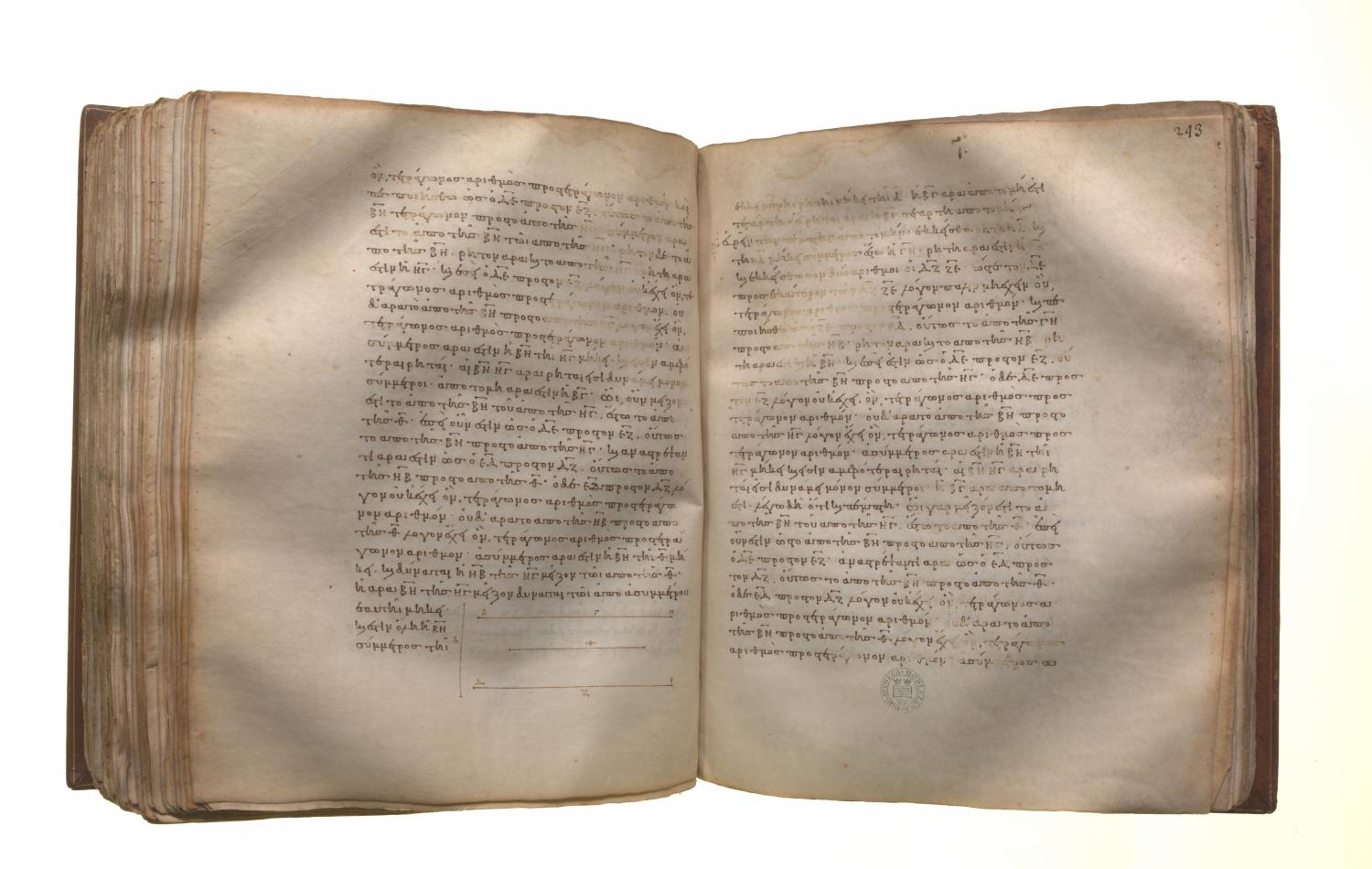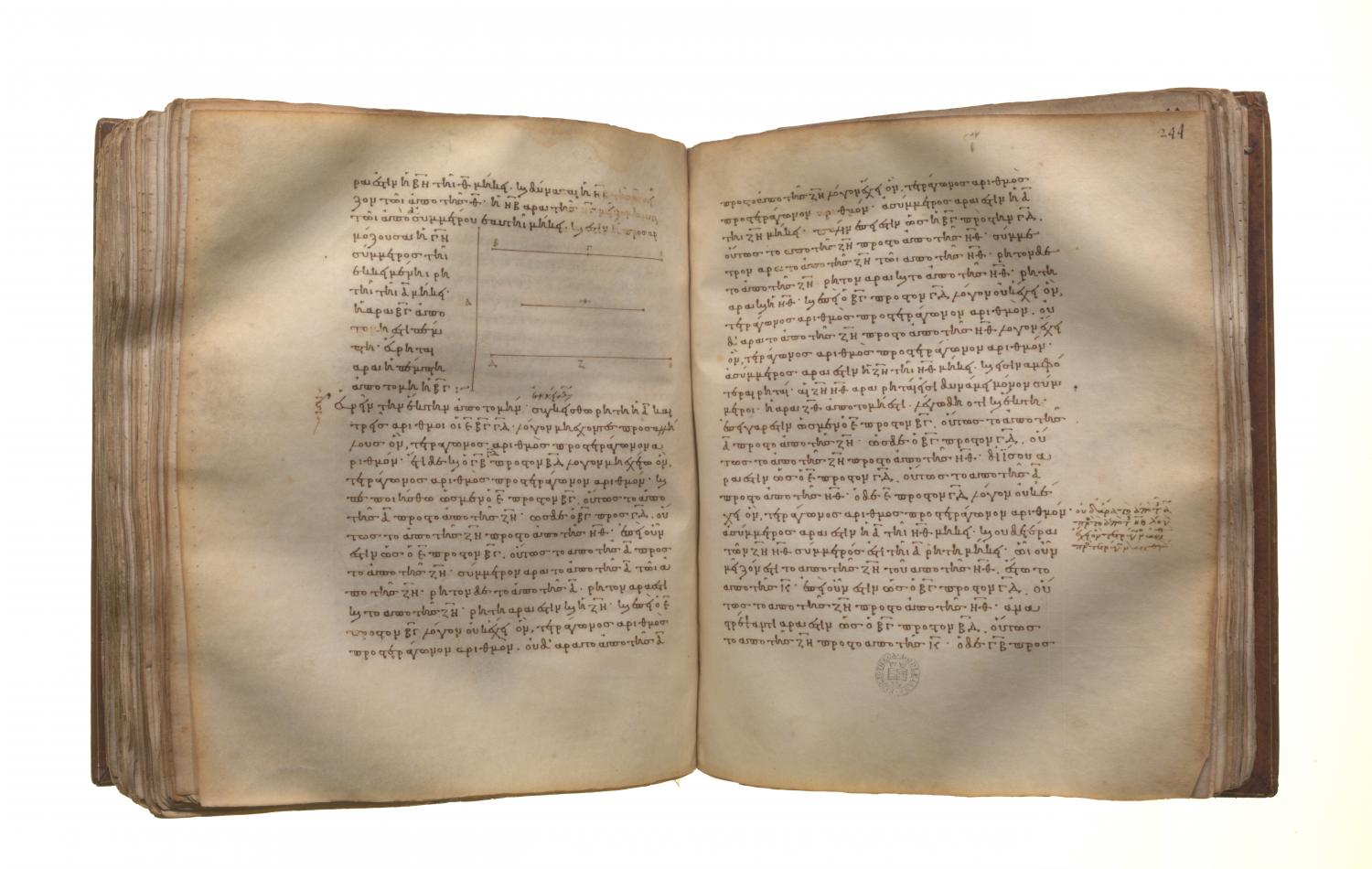Classification of incommensurables: Book 10 Proposition 89
Translations
To find the fifth apotome. Let a rational straight line A be set out, and let CG be commensurable in length with A; therefore CG is rational. Let two numbers DF, FE be set out such that DE again has not to either of the numbers DF, FE the ratio which a square number has to a square number; and let it be contrived that, as FE is to ED, so is the square on CG to the square on GB. Therefore the square on GB is also rational; [X. 6] therefore BG is also rational. Now since, as DE is to EF, so is the square on BG to the square on GC, while DE has not to EF the ratio which a square number has to a square number, therefore neither has the square on BG to the square on GC the ratio which a square number has to a square number; therefore BG is incommensurable in length with GC. [X. 9] And both are rational; therefore BG, GC are rational straight lines commensurable in square only; therefore BC is an apotome. [X. 73] I say next that it is also a fifth apotome. For let the square on H be that by which the square on BG is greater than the square on GC. Since then, as the square on BG is to the square on GC, so is DE to EF, therefore, convertendo, as ED is to DF, so is the square on BG to the square on H. [V. 19, Por.] But ED has not to DF the ratio which a square number has to a square number; therefore neither has the square on BG to the square on H the ratio which a square number has to a square number; therefore BG is incommensurable in length with H. [X. 9] And the square on BG is greater than the square on GC by the square on H; therefore the square on GB is greater than the square on GC by the square on a straight line incommensurable in length with GB. And the annex CG is commensurable in length with the rational straight line A set out; therefore BC is a fifth apotome. [X. Deff. III. 5]

